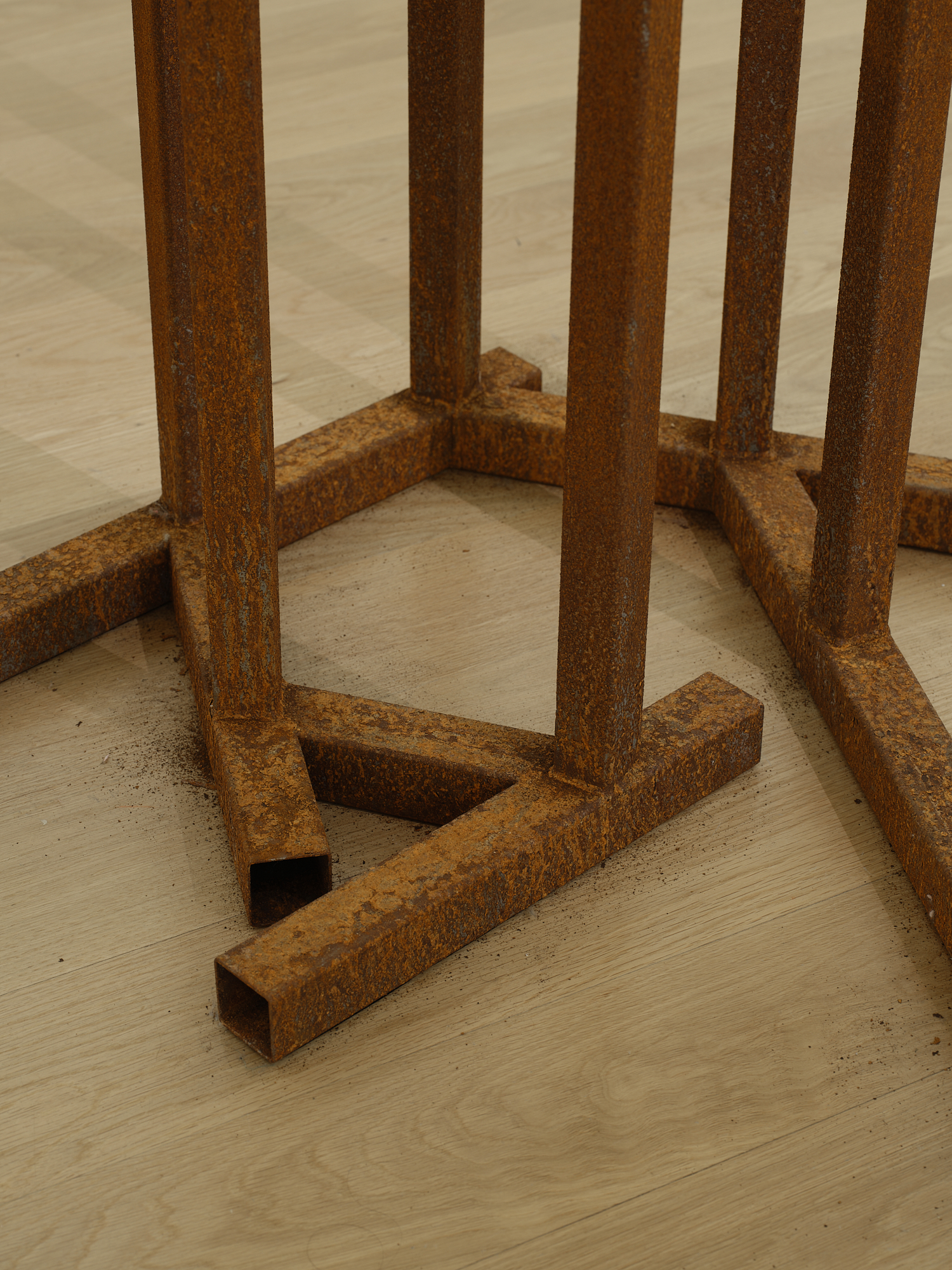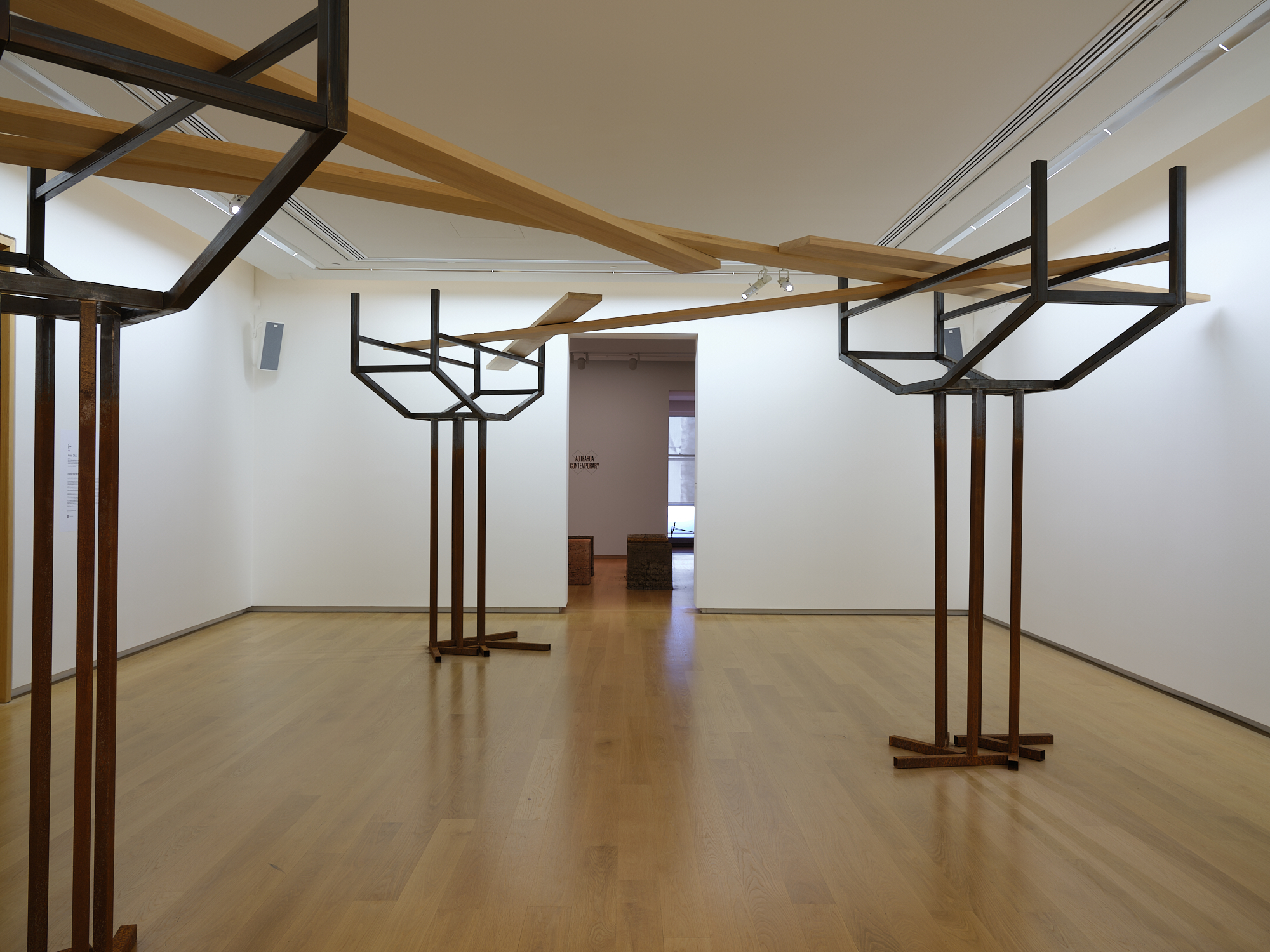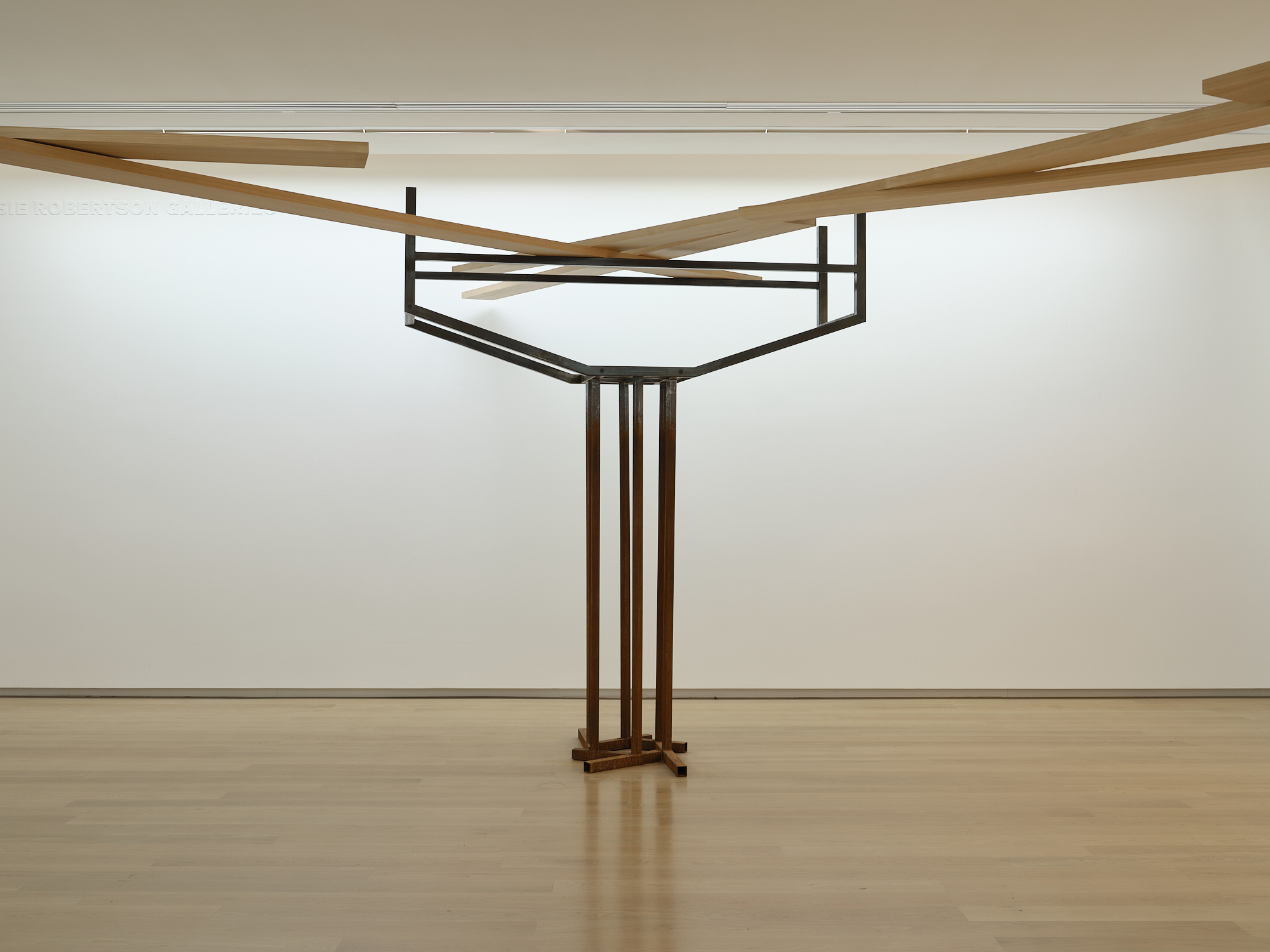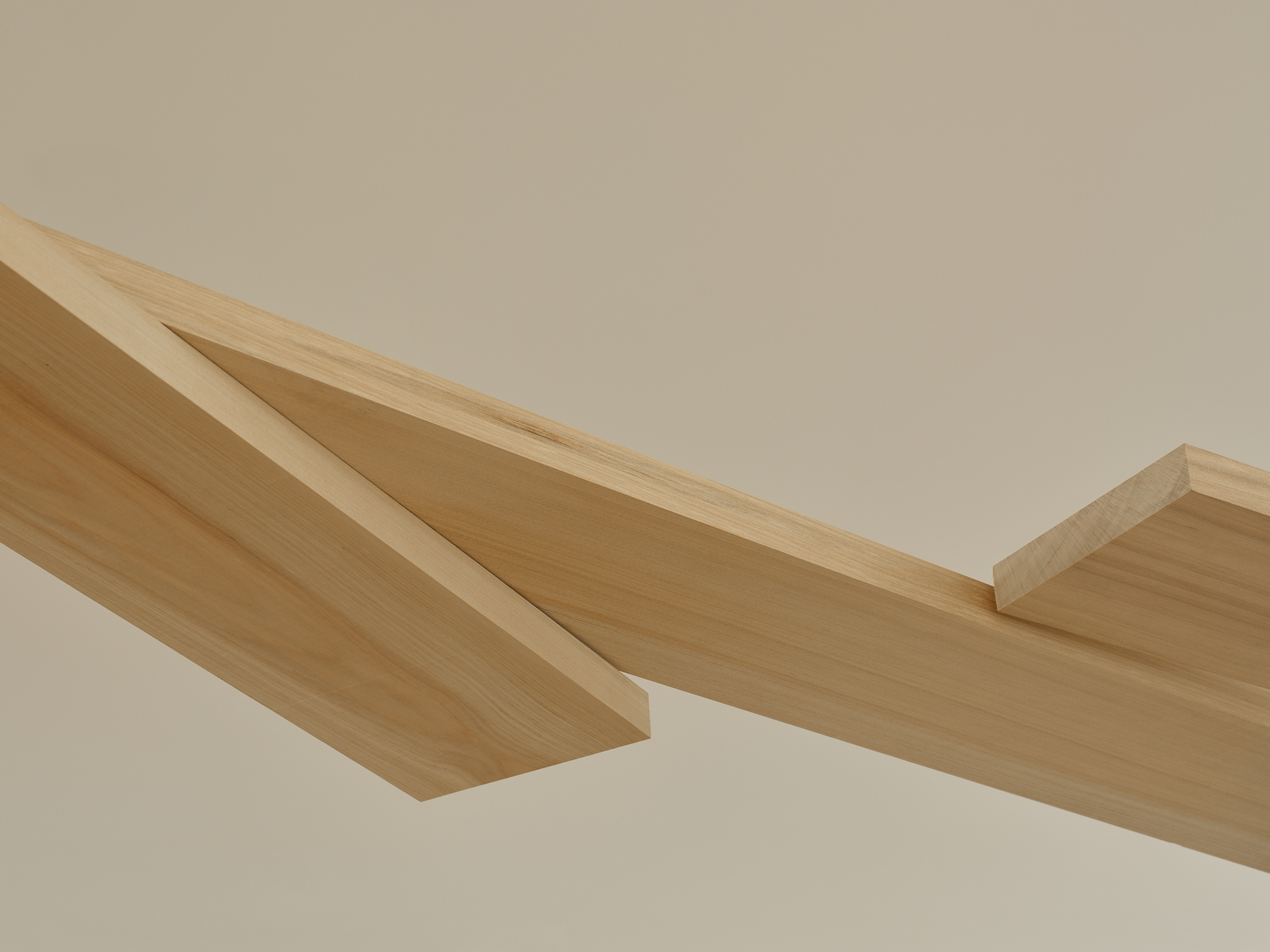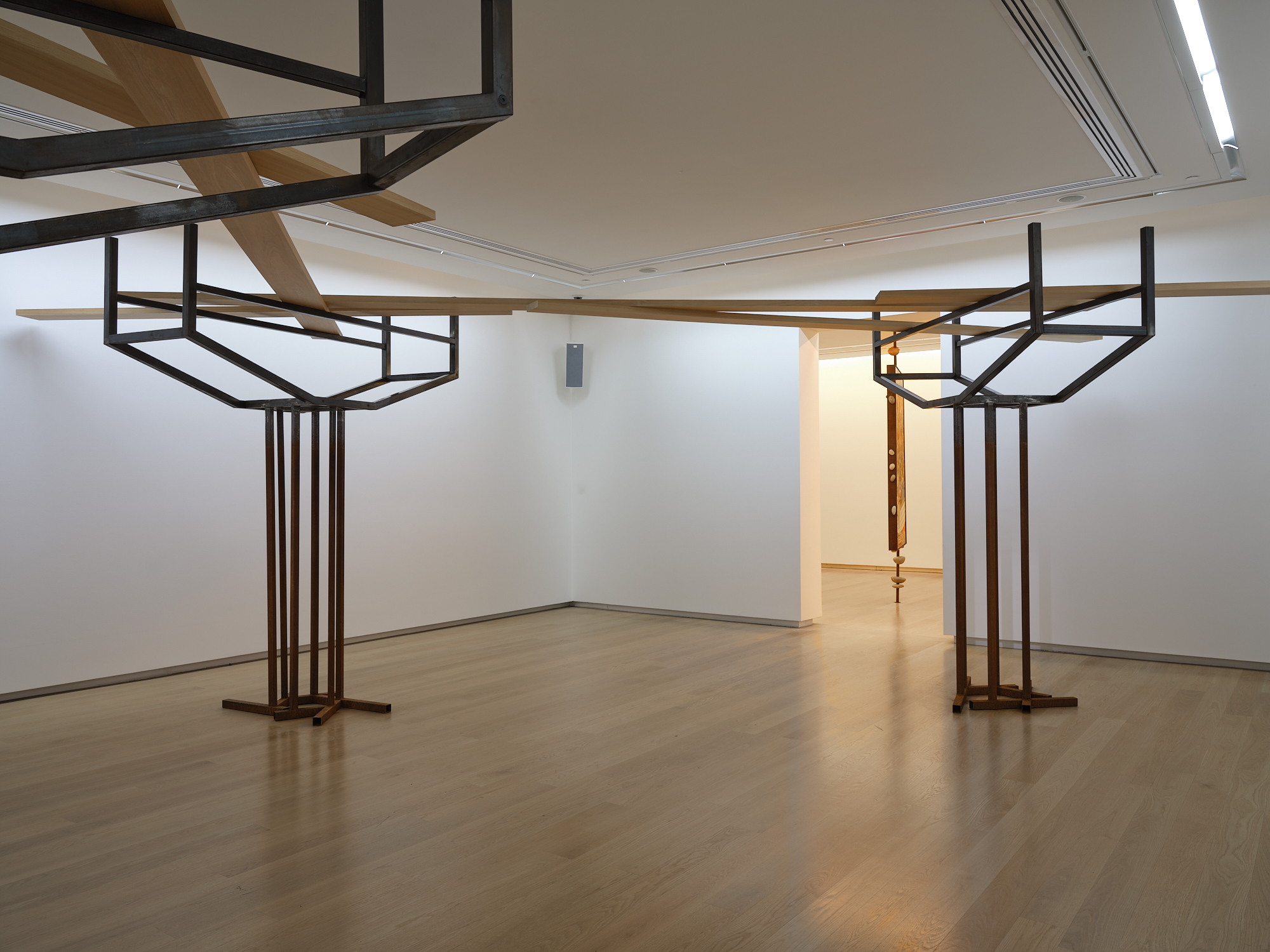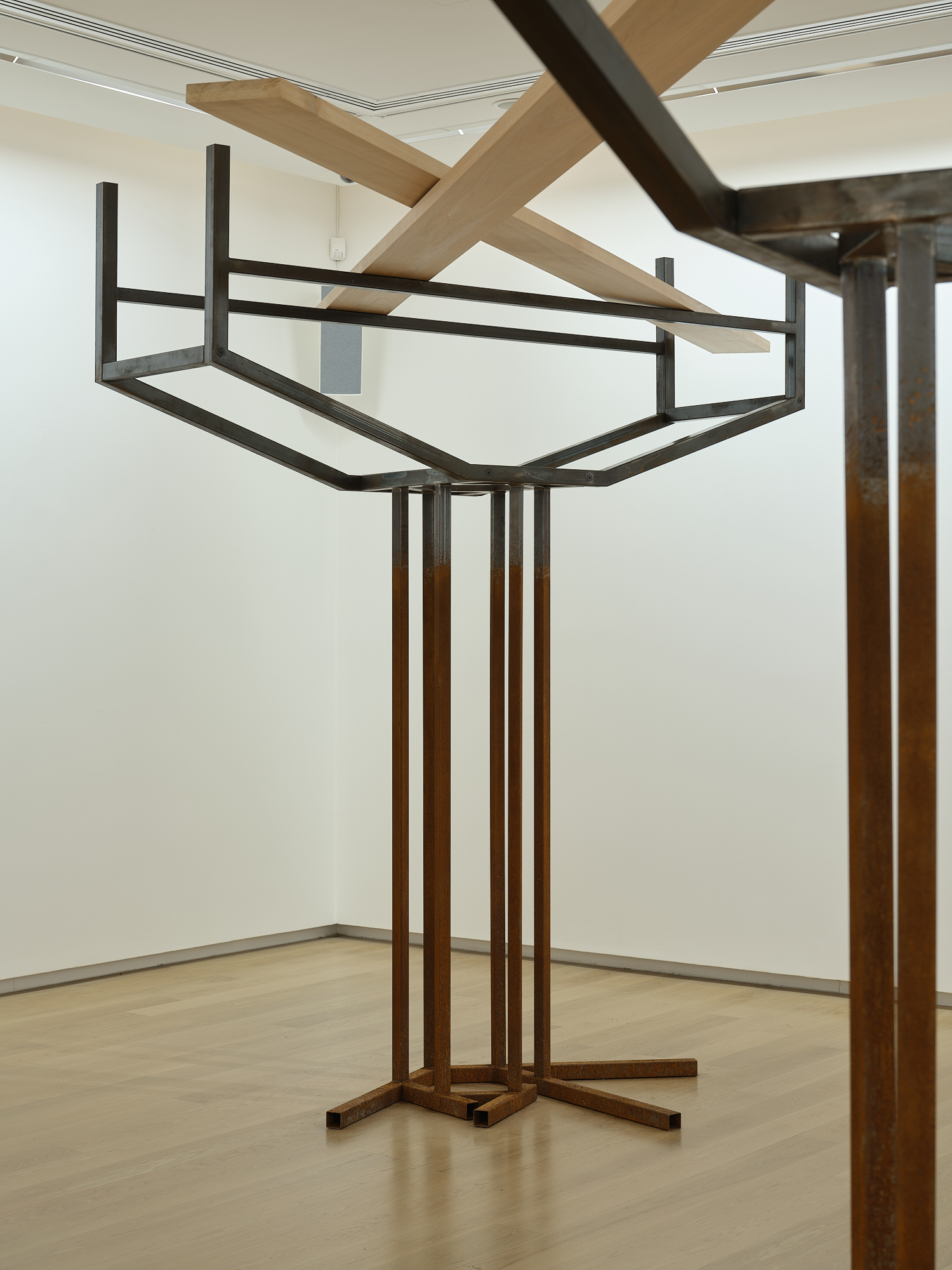
A RESILIENT HEART LIKE THE MĀNAWA
Exhibited in the Walters Prize 2024, Toi o Tāmaki Auckland Art Gallery, Tāmaki Makaurau Auckland, curated by Natasha Conland and Cameron Ah Loo-Matamua
A resilient heart like the manawa, 2024, reimagines the structure of the Rāwene Wharf as a skeletal version of itself, replacing concrete piles for steel and reducing its deck boardwalk to a delicate network of kauri timber beams. The original wharf was built in 1881 as a means of servicing the booming timber industry that Rāwene and much of Hokianga had become renowned for, increasing settler appetites for the area’s natural resources and accelerating the degradation of its waterways and forests. The wharf lies in the waters of the Hokianga Harbour, looking out to Motukaraka Point where Iti’s marae, Ngāi Tūpoto, is situated. Iti has collected field recordings from Rawene, distilling the rhythms of the sea, mānawa (native mangroves), and the arrival and departure of the passenger ferry.
In this installation Iti extends her method of referencing found elements within the built and natural environment to explore their potential as material, and as metaphoric traces of colonialism, industrialisation and more broadly, the complex relationships between people, whenua (land) and the natural world. In The woman whose back was a whetstone, 2021, one of the works for which Iti won a nomination for the Walters Prize, she invoked Hinetuahōanga, the atua wahine (Māori deity) of grindstone, as a foundational ancestor for the practice of sculpture. Poetically expanding on this, Iti now thinks of her work as responding to ‘ko te pā o te hōanga’, or the touch of the grindstone, the shifting points of contact where cultures and environments meet and generate new meaning.
- Cameron Ah Loo-Matamua
Kauri timber, steel, rust, audio field recordings
Photography by Sam Hartnett
Photography by Sam Hartnett

